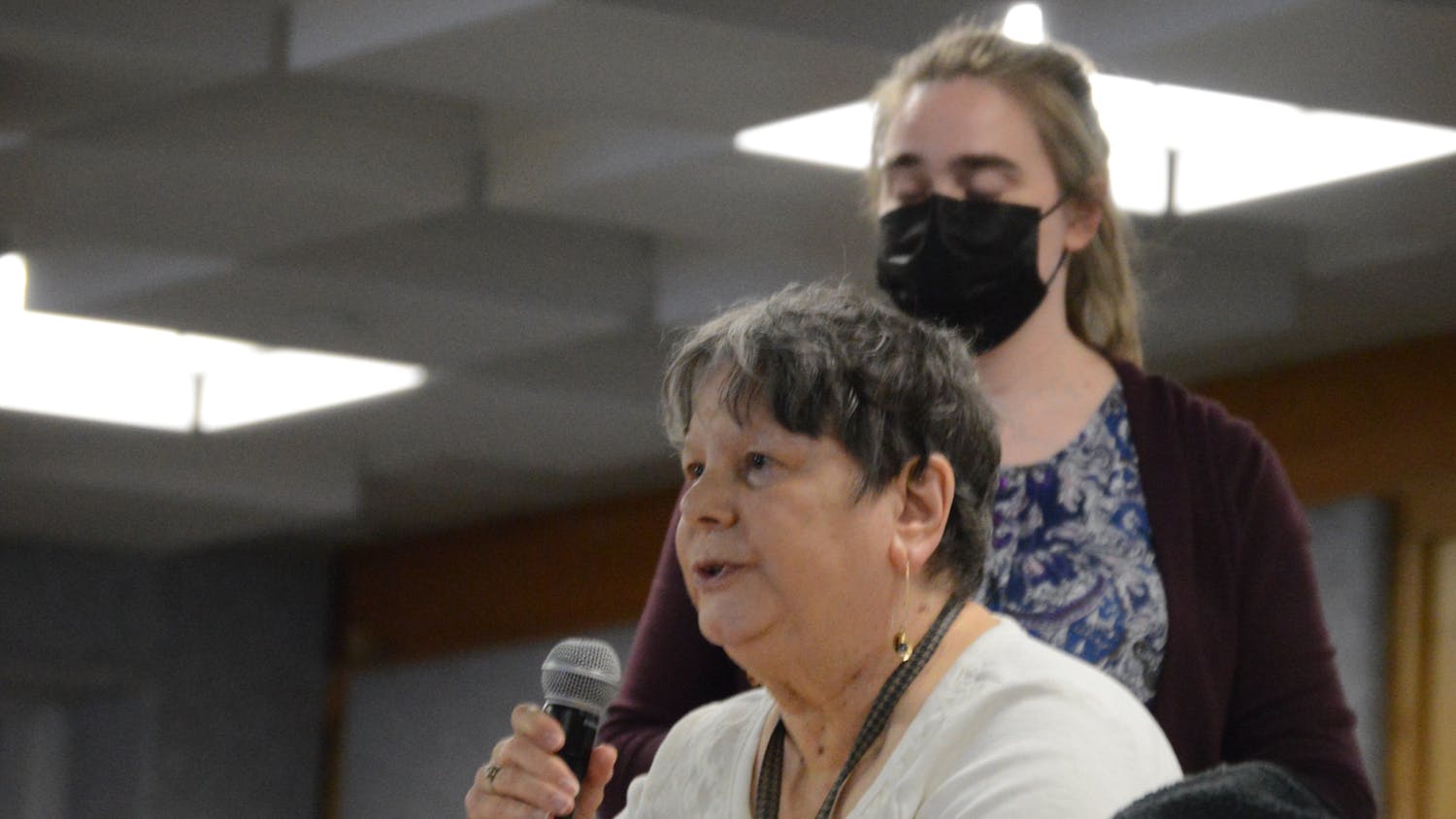Federal officers arrested a prominent UB alumnus and big-time donor, John Kapoor, last Thursday for his alleged involvement in an opioid-pushing scheme.
Kapoor donated $10.8 million to the School of Pharmacy and Pharmaceutical Sciences, earning naming rights to the building in 2012. He and six of his hand-picked executives are accused of bribing doctors and pharmacists around the U.S. to prescribe a highly addictive fentanyl spray to patients who didn’t need it. The 74-page-long indictment details the company’s aggressive marketing schemes and its conspiracy to defraud insurers.
Hours before Kapoor’s arrest, President Donald Trump declared the opioid epidemic a public health emergency; promising to redirect federal aid and loosen regulations to combat drug abuse. While national media outlets began weighing Trump’s proposal, UB braced itself as another prominent and oft-touted alumnus fell from grace.
UB officials released a statement Thursday afternoon, which said the school was made aware of the charges through media reports and would not comment further until they had more information.
“The building that is home to UB’s School of Pharmacy and Pharmaceutical Sciences bears the name of Kapoor and his wife in recognition of their long-time philanthropic support of the school and the university,” said UB spokesperson John Della Contrada in the statement.
In April 2017, UB defended Kapoor after The Spectrum reported high-ranking officials within his company were indicted on federal charges.
The indictment accuses Insys Therapeutics, Kapoor’s Arizona-based company, of rewarding employees for their ability to get doctors to prescribe Subsys in large quantities and high dosages.
Insys’ aggressive marketing strategies came after the company’s flagship product, a mouth-spray version of fentanyl called Subsys, turned a lackluster profit in its first year on the market. It was approved in 2012 for a very narrow patient population; adult cancer patients who’d grown tolerant to other opioids and needed the potent fentanyl spray for intense, breakthrough pain. Executives re-grouped and looked for ways to expand the drug’s appeal.
Part of their new strategy involved a pay structure that paid workers a low-base salary and offered “uncapped bonuses” for additional Subsys sales.
The company further rewarded employees able to sell the drug in higher dosages, doubling the percentage for which the employee would be compensated.
Alec Burlakoff, former vice president of Sales for Insys, directed employees to notify him any time a practitioner prescribed a Subsys dosage lower than 400 micrograms. The FDA approved Subsys prescriptions at a base of 100 micrograms because of the drug’s extremely addictive properties.
Burlakoff said low dosage prescriptions were worse than losing out to a competitor.
“I do not know how I can stress enough just how detrimental prescriptions for 200 micrograms and 100 micrograms are to the company, patient and overall state of business...Anyone who ignores these instructions is subject to immediate negative consequences,” Burlakoff said in an email copied to Kapoor and other senior executives.
When Insys executives realized the practice was starting to make some sales reps uncomfortable, they put together a rap video for their National Sales Meeting in 2015.
The video was performed to the tune of artist A$AP Rocky’s “F**kin’ Problems,” and featured prominent Insys sales reps rapping about how comfortable they are with selling high dosages of fentanyl spray.
During the video, the indictment alleges, Insys employees dance around with a life-sized, 1600 microgram bottle of Subsys, the largest dosage available in the U.S. While dancing, the employees sang the refrain “I love titration, and that’s not a problem!”
At the end of the video, Burlakoff revealed himself as the dancing Fentanyl spray bottle. Burlakoff was one of the seven executives indicted. All have pleaded not guilty.
The dean of the School of Pharmacy and Pharmaceutical Sciences declined to comment on the allegations; and faculty members within the School were directed by the Dean not to speak to any media.
The opioid epidemic is at large in the city of Buffalo. Erie County has one of the highest rates of opioid abuse in New York State, with 30 overdoses for every 100,000 people in 2015.
David Herzberg, a history professor at UB who specializes in the U.S.’s cultural history of drug and opioid abuse, said the opioid epidemic requires a two-pronged approach: increased regulation of pharmaceutical companies and treating addicts without cutting off their supply.
“Once you have people dependent on opioids, you can’t simply cut off their supply,” Herzberg said. “Being dependent on opioids isn’t fatal; it just means you need to take opioids. People are dying now because they lose their reliable supply and have to switch to an unreliable supply, and then there’s a great risk. So you need to pursue the only treatment that’s been proven to keep people addicted to opioids from dying—medically-assisted treatments.”
Dr. Richard Blondell, who specializes in opioid and other drug abuse treatment, calls the opioid crisis an “artificial epidemic” manufactured by America’s “medical industrial complex.”
Blondell said in order to work to fix this crisis, all parties: pharmaceutical companies, doctors, patients, lawmakers and insurance companies need to take responsibility for their role in what he calls the “military industrial complex.”
“There’s plenty of blame to go around,” Blondell said. “Each of these players has to accept responsibility for their own little piece of this mess. Each of these players need to fix their own messy corner. You can’t clean up the room until everybody cleans up their corner of the room.”
Some say Trump’s public health emergency doesn’t go far enough to secure funds needed to address the issue. Blondell said Trump’s speech laid out a reasonable plan for addressing the issue; but lacked important details about funding or specific tactics.
The Trump administration has cut support to mental health services and Medicaid, a program crucial for treating many of the most opioid-afflicted communities: poor, rural, predominantly white regions of the U.S., Blondell said.
“He outlined the broad brushes of a reasonable, strategic approach. What’s lacking is the tactical approach; how it is going to be funded,” Blondell said. “We know for instance that only one out of 10 people who have addictions are actually getting treated. So one of the things they say is, ‘well we’re just going to get more people into treatment.’ So if we put the other 90 percent in the system, where are the beds coming from? The nurses? The doctors?”
UB’s School of Medicine and other organizations are working to address the crisis at the local level, Blondell said. He runs the UBMD clinic for addiction medicine ambulatory care on Sweet Home Road. The medical school has also changed its curriculum to teach students about addiction. But they too, are only able to do so much without state and federal funding, Blondell said.
“We’ve got two fellows in [addiction medicine] training; every Friday morning from 7:30 to 8:30 we offer a class for doctors to come learn about addiction,” Blondell said. “Erie County has an opioid task force, trying to distribute Narcan. Horizon Healthcare Services runs a detox clinic at a rehab facility. There is a bit of a grassroots effort, not coordinated, it’s just done because people want to do the right thing. There are doctors out there that want to help, but you know, we still have to pay the light bills and pay our staff.”
Sarah Crowley is the senior news editor and can be reached at sarah.crowley@ubspectrum.com





